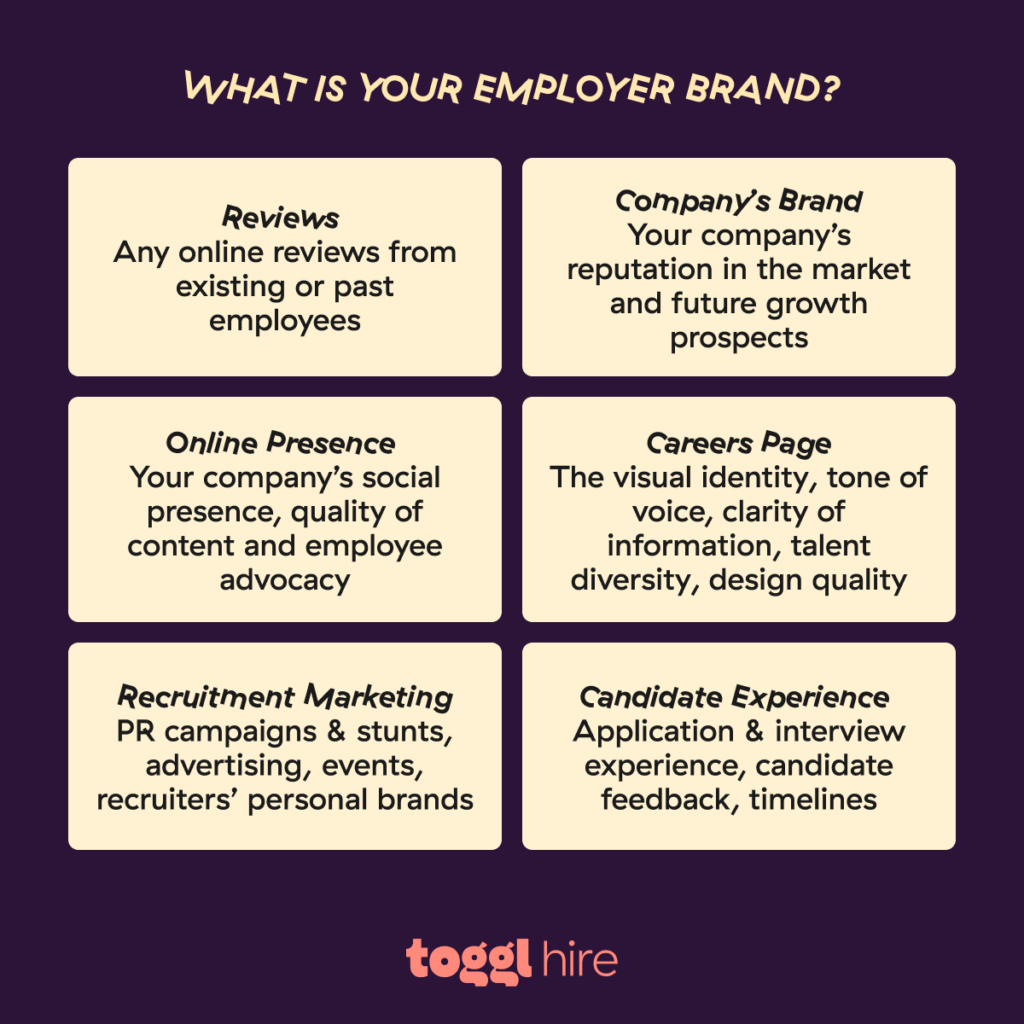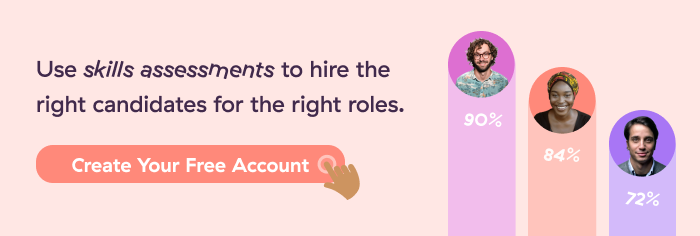Hiring these days is a bit like finding a needle in a haystack, except the haystack is the entirety of the online world, and the needle’s got a LinkedIn profile.
With technology evolving faster than a speeding bullet, companies are struggling to find suitable candidates with just the right mix of skills. Add remote work into the mix, and suddenly, the world’s your oyster — but so is everyone else’s.
The result? A massive pool of candidates that’s both a blessing and a curse. The solution? Targeted recruitment.
With the rise of niche job boards, you now have the ability to attract the exact type of talent you need for a lower cost while reducing turnover and time to hire. While that sounds great (doesn’t it?), it’s not just about casting a wide net; it’s about casting the right one. Here’s how.
TL;DR — Key Takeaways
Targeted recruitment is a way of sourcing and hiring candidates for a specific role. It’s the opposite of open recruitment.
It’s best to use a targeted recruiting strategy in situations when you need someone with a specific skill set or to fill a technical position — essentially, in situations when qualifications can actually make or break someone’s success in a role or if you have a limited recruitment budget.
There are many different examples of targeted recruitment, such as pay for performance, recruiting from college campuses, and advertising on niche job boards. Each has its pros and cons, so consider what best fits your needs.
An open recruitment strategy can be useful if you’re hiring for a role where qualifications are secondary, for example, in personality-driven roles, or if you need a large hiring volume in a short space of time.
It’s key to approach your targeted recruitment strategy with intention and planning, including setting the right goals, monitoring metrics, and implementing automation, such as skills tests.
What is targeted recruitment?
Targeted recruitment is a strategic approach to hiring that focuses on reaching specific candidates who have the exact skills and experience your company needs. It’s about:
Zeroing in on the right talent pools
Using data and insights to guide your search
Crafting messages that speak directly to those potential hires

This is particularly important in today’s hiring landscape, where the rise in technology and digital transformation has created a demand for specialized skills in practically every industry. It’s also important because there are so many passive candidates that could help make your candidate search a thousand times easier.
For example, according to a LinkedIn report, 70% of the global workforce is made up of passive talent who aren’t actively job searching. This dynamic underscores the importance of targeted recruitment strategies in not only reaching out to those who are not looking but also in effectively filtering through the vast pool of candidates.
Couple this with the rise of remote work, which opens up the talent pool to global candidates, and you can see how finding a technically skilled and specialized candidate quickly becomes overwhelming for any recruitment team.
What is a targeted recruitment strategy?
Targeted recruiting is nothing without a plan in place for how to effectively target candidates, advertise job openings, and measure those recruitment advertising efforts. That’s a targeted recruitment strategy, your plan to strategically attract ideal candidates for the advertised position.
A good targeted recruitment process has specific goals and intentions behind it that you track with metrics to measure ROI — not unlike full-cycle recruiting.
The main goals of a targeted recruitment strategy are:
Getting experts into the organization
Increasing the quantity and caliber of applicants
Ensuring diverse workplace representation within the organization
Lowering the cost per hire
This means that targeted recruitment isn’t used exclusively for sourcing the next executive for your business or for filling the more difficult technical roles. It encompasses the entire recruitment lifecycle and can be used to support many different departments.
Confused? Don’t worry — we’ve got a few great examples of how companies usually implement targeted recruitment into their recruitment process.
Example 1: Pay for performance
A pay-for-performance compensation model is also considered a form of targeted recruitment. This is a performance-based program, usually used for roles such as sales or manufacturing, where more deliverables equal better pay.
Pros:
A good way to attract and retain top, qualified talent
Gives employees a greater sense of control
Cons:
Can shift focus to quantity rather than the quality of work
Risk of subjectivity in reviewing performance
Example 2: Recruiting from college campuses
Recruiters do sometimes target colleges or high schools to find candidates for entry-level positions or internships. Other educational recruitment approaches could include targeting high schools for career development programs like Microsoft’s High School Discovery Program.
Pros:
You’ll get good quality grads that can feed into your junior-level positions
A good source for internships
Builds good employer branding
Lower salary cost
Cons:
Candidates have little or no experience
Possibly low emotional intelligence levels
Lots of screening (but tools like Toggl Hire can help you automate that!)
Example 3: Advertising on niche job boards
Posting your job ads on niche job boards, specialist websites, or in specific publications like trade journals or industry magazines is a great way to fill a technical role.
Pros:
Gain qualified candidates that meet your specs
Candidates will more likely have the exact skills and experience you’re looking for
Reduce hiring costs as you’re screening fewer candidates
Cons:
Higher salary bracket
Less reach for your advertising efforts
Smaller group of applicants to choose from

Benefits of targeted recruiting vs. open recruiting
Open recruitment is the process of hiring individuals without much emphasis on specific skills, backgrounds, or demographics. The main purposes of open recruitment are to fill lots of positions quickly or to consider often-overlooked groups, such as ex-convicts or the homeless.
There are situations when open recruiting strategies might make more sense, such as filling up a new call center, but for many companies, targeted recruitment usually makes more sense. Here are some benefits of targeted recruitment.
Improve candidate quality
A targeted recruitment strategy is the way to go if you need high-quality candidates who are competent and will be able to start producing value for the company quickly.
This is because targeted recruitment allows you to focus on specific skills and experiences required for the job to ensure you hire the person with the right competencies.
Skills testing tools can save you lots of time and effort by helping you automate the initial screening process and weed out clearly unqualified candidates. They’re great tools to use if you need to highlight quality candidates.
Tips for hiring high-quality candidates:
It all starts with an attractive company culture
Seek out candidates with high emotional intelligence
Perform some market research to ensure your benefits are still relevant
Ensure a fast application process
Enhanced employer brand image
Targeted recruiting often leads to an enhanced employer brand image by showing potential candidates you prioritize skill and suitability for the role over the sheer quantity of applicants.
While that might sound like the least of your worries when developing recruitment strategies and sifting through candidate profiles, over 60% of job seekers globally name “good reputation” as the key assessment criteria for a job.
Leveraging your company’s social media and online presence can help you develop a successful targeted recruitment strategy that enhances your employer brand. Share things like your:
Company culture
Company mission
Testimonials from existing employees

Being authentic in how you portray your employer brand will ensure you attract the right candidates for your company culture and attract passive candidates who didn’t even know they wanted to work for you until they saw your careers page.
Increased workplace diversity
One of the biggest yet often overlooked benefits of targeted recruitment is that when your recruitment process is more targeted, you are able to focus on specific under-represented groups, creating a more diverse workplace.
Diverse workplaces are more creative, more versatile in their skill sets and perspectives, and better decision-makers.
Tip: Whether your aim is to hire more ethnic minorities or to reduce hiring bias entirely to attract skilled candidates regardless of their diploma or work experience, our two tips for promoting workplace diversity through targeted recruiting are to:
- Partner with minority-focused job boards or communities
- Improve accessibility for differently-abled employees
Reduced cost per hire
Leaning on targeted recruiting methods can save time and reduce the cost per hire, as you’re minimizing time spent reviewing unqualified candidates. Instead, you’re attracting qualified candidates through an optimized job description and reviewing only candidates who fit your needs.
An applicant tracking system (ATS) or skills testing platform can aid in further reducing candidate sourcing costs by reducing the time spent screening applicants.
Reduced turnover rate
An effective targeted recruitment strategy leads to a better job fit, which boosts job satisfaction and lowers turnover.
Besides dealing a blow to team morale, a higher turnover rate also impacts company performance. 60% of companies struggle to replace company leavers with people who have equivalent skills. High employee turnover also equals higher operating and recruitment costs.
Targeted recruiting can mitigate these issues by helping you carefully select how and where to advertise open positions to maximize your chance of filling challenging positions with skilled candidates.
Beyond just hiring, you can keep the turnover rate low post-hire by providing ongoing training and opportunities for career growth.

How to develop a targeted recruitment process
While targeted recruitment can be beneficial, it’s only as effective as your planning and execution. Here are the steps for creating a killer targeted recruitment strategy.
1. Engage in workforce planning
When creating a targeted recruiting strategy, start with the big picture. Ensure you understand the wider workforce needs of the company, as well as anticipate future needs.
Staying on top of this not only helps identify skill gaps and predict hiring requirements that may arise but also ensures you’re targeting candidates that are relevant for the role right now — not last year when the skills needed to succeed on the job were likely different.
Collaborate with different departments if you need to. A strong workforce plan will build a strong foundation for a successful targeted recruitment plan.
2. Build ideal candidate profiles
An ideal candidate profile is a combination of the real characteristics of your candidates and the ideal characteristics of the perfect employee.
These candidate personas help you tailor your job description to appeal to your ideal applicants and can help you attract candidates who resonate with the demands of the position.
While building this persona, keep a few things in mind:
Required skills and experience (both hard and soft skills)
Personality traits or disposition where relevant (e.g. if in a customer-facing role)
Cultural fit, values, and motivations
Another top tip is to keep an eye on your channels and sources. Some might be better at building out your ideal applicant pool than others. For example, if you’re focused on appealing to more ethnic minorities, try focusing your job advertising efforts on job boards for that specific audience.
3. Set hiring goals
No business initiative is complete without goals and trackable metrics. Targeted hiring is no different. Some common goals include:
Improving workplace diversity
Reducing time-to-hire
Increasing retention rates
Adding specific expertise to the organization
Before launching a job ad, you should also know the applicant volume you’re aiming for and have the recruiting tools in place to handle it. Once you’re clear on your goals, you’re ready to start your talent acquisition efforts and should know exactly where to focus your recruitment advertising efforts.
4. Create targeted job descriptions
Your job description is usually the first point of contact an applicant has with your brand. You want to ensure the content of that ad accurately reflects the role and responsibilities to attract desirable candidates.
Use specific information in your listing, including:
Number of years of experience (if absolutely relevant)
Precise skills or tools you expect proficiency in
Particular traits you want and why
Positions of leadership or responsibility held in the past
Once you’ve written a draft, pass it through a tool like UInclude to ensure you’re not using any biased wording. Inclusive language can boost applications from a diverse pool of applicants and bolster your positive employment brand image.
5. Post on niche job boards
Using niche job boards is a great tactic for targeted recruitment, as it helps you reach a more focused group of potential candidates.
For example, MediJobs is one of the biggest job boards for healthcare professionals in Germany. Remotive.io is an industry leader in tech and remote work, while Behance is the place to find creatives and designers across industries.
6. Use skills tests to filter candidates
Skills tests provide objective measures of a candidate’s skills, reducing bias in the hiring process. With the right kind of tool, you can test for different types of skills, like programming tests for technical positions, writing tests for content creation roles, and negotiation for sales roles.
Platforms like Toggl Hire make it easier to filter candidates in the initial stages of recruitment. As soon as a candidate applies for an open position, you can see their skills test score by their name.
By filtering candidates by test score, you can instantly see who’s at the top of the pack. That way, your hiring managers can focus all their energy on the top shortlist instead of wasting time on unqualified candidates.
Not only does this reduce the time to hire, but it also improves employer brand image and boosts candidate experience metrics.
When should you use a targeted recruitment strategy?
Both targeted recruitment and open recruitment have their benefits. The key is knowing when to use which strategy.
Open recruiting strategies are ideal when:
You’re hiring for lots of job openings in a short period of time
You have lots of resources for on-the-job training
You’re hiring for positions where you expect a lot of churn, such as seasonal jobs, call centers, etc
Professional qualifications are not the main focus
Targeted recruitment strategies are ideal when:
You’re looking for a candidate with highly specialized skills
You have more time to fill challenging positions
You have a smaller recruitment budget
You’re hiring for positions with specific responsibilities

Filter unqualified candidates with Toggl Hire
When applied correctly, targeted recruitment strategies work to help you build a more highly-skilled and diverse workplace. That said, it’s important to follow a structured process to measure the results of your targeted recruitment plan and optimize it with every hiring cycle.
When implemented correctly, the benefits of targeted recruiting include reduced time to hire, reduced turnover rate, increased job satisfaction, increased applicant quality, and better employer brand image.
As part of your targeted recruiting efforts or any new recruitment strategy, skills testing with a tool like Toggl Hire can be incredibly helpful to screen unqualified candidates in seconds and save a lot of time.
Don’t just take our word for it, though. Create a free account to see how Toggl Hire can help with your targeted recruitment strategy.

Julia is a freelance writer and fierce remote work advocate. While traveling full-time, she writes about the intersection of technology and productivity, the future of work, and more. Outside work, you can find her hiking, dancing, or reading in a coffee shop.






